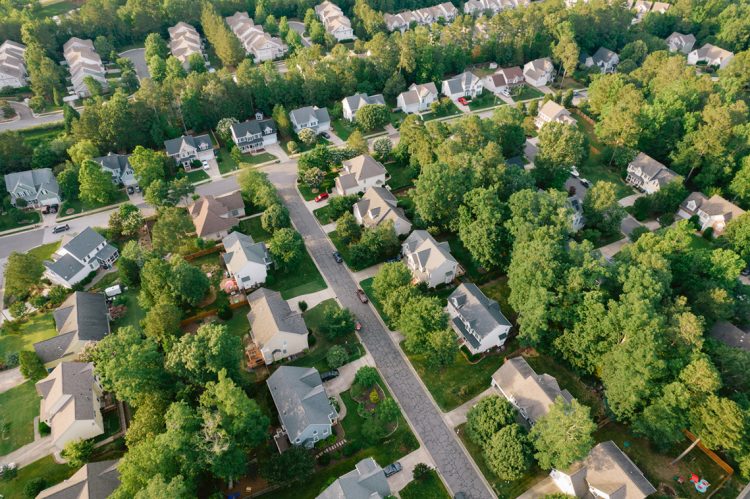One of the enduring allures of suburbia is its affordability relative to cities. Perhaps not for much longer.
The pandemic-induced exodus from big cities significantly impacted the rental price advantage of America’s suburbs, which shrunk by 52.9% compared to 2019, according to a new report from realtor.com®.
The report, which is released monthly, also found that national rents, both across urban and suburban areas, reached a new high ($1,878) for the 17th month in a row in July. However, rent growth has continued to decelerate in recent months, signaling a shift toward a more sustainable balance of rental supply and demand.
National rental metrics:
- Overall
Median rent: $1,879
Change over July 2021: 12.3%
Change over July 2020: 23.2%
- Studio
Median rent: $1,555
Change over July 2021: 14.3%
Change over July 2020: 20.2%
- 1-bed
Median rent: $1,745
Change over July 2021: 12.2%
Change over July 2020: 22.9%
- 2-bed
Median rent: $2,103
Change over July 2021: 11.7%
Change over July 2020: 23.7%
Key metro rental metrics:
- New York-Newark-Jersey City
Median rent: $3,010
YoY increase: 25.4%
- Los Angeles-Long Beach-Anaheim
Median rent: $3,047
YoY increase: 12.6%
- Chicago-Naperville-Elgin
Median rent: $2,045
YoY increase: 20.6%
- Dallas-Fort Worth-Arlington
Median rent: $1,703
YoY increase: 14.7%
- Houston-The Woodlands-Sugar Land
Median rent: $1,450
YoY increase: 8.2%
- Washington-Arlington-Alexandria
Median rent: $2,208
YoY increase: 10.4%
The takeaway:
“Whether in a downtown area or suburb, staying put or making a change, renters are stuck between a rock and a hard place when it comes to affordability. Compared to three years ago when rental price premiums were typically concentrated in urban hubs, renting is now nearly as expensive in the suburbs, where the rise in remote work has driven a surge in demand,” said realtor.com® Chief Economist Danielle Hale. “At the same time, the days of smaller premiums for downtown rentals are numbered, as a return to in-office work and city life is sparking a relative uptick in urban rent growth. Put simply, renters are feeling it everywhere, but there may be some relief ahead. Survey findings suggest that landlords are adjusting their approaches to renters’ tightening budgets, while July data shows rent growth is leveling off at a relatively cooler pace than in 2021.”
Read the full report here.












